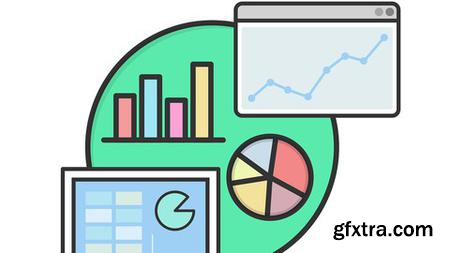
Released 12/2022MP4 | Video: h264, 1280x720 | Audio: AAC, 44.1 KHz, 2 ChGenre: eLearning | Language: English | Duration: 3h 57m | Size: 1.2 GB
The Data Visualization Life Cycle not only teaches you fundamentally useful techniques for making your data visualizations better, but it will also open your eyes to the different data cultures that exist in our modern, data-driven world. You learn how to make better data visualization for your stakeholders, work more effectively with your peers, and enhance your ability to explore your own data. Elijah Meeks is a co-founder and Chief Innovation Officer of Noteable, a startup focused on evolving how we analyze and communicate data. He is known for his pioneering work in the digital humanities while at Stanford, where he was the technical lead for acclaimed works like ORBIS and Kindred Britain. He was Netflix's first Senior Data Visualization Eeer, and while at Netflix and Apple worked to develop the charting library Semiotic as well as bring cutting-edge data visualization techniques to analytical applications for stakeholders across the organization including A/B testing, conversation flows, algorithms, membership, people analytics, content, image testing, and social media. He is a prolific writer, speaker, and leader in the field of data visualization and the co-founder and first executive director of the Data Visualization Society. Bner Intermediate Understand your audience and the approach you should take to your data visualization Optimize data visualizations for different data cultures and points in the life cycle Collaborate with others to produce data visualizations Manage pain points when working with different data professionals Improve data explanation Design for different kinds of data products and delivery methods Build a data visualization culture and increase data literacy Investigate automated and machine-based analysis View data visualizations as business assets Audience: This video series is designed to provide key context and skills for data visualization creators whether they are analysts, data scientists, data eeers or even downstream data consumers and leadership. You’ll find the most value in the course if you’ve learned some fundamentals of data visualization and need more practical advice for how to work with peers and stakeholders to create effective data communication. Working understanding of basic data visualization (knowing when and being able to create bar charts, line charts and scatterplots) Experience building data products like dashboards, reports or presentations using data visualization Familiarity with the data lifecycle Lesson 1. Understanding Stakeholders and Approaches to Data Visualization Data visualization is often taught as if there was only one kind of approach to answer one kind of question for one kind of audience. But data visualization out in the real world is used in many different ways with different goals and different ways of measuring impact. In this section, I introduce the data visualization life cycle, which will provide you with a broader understanding of different approaches to data visualization. Lesson 2. Optimizing for Different Data Cultures It’s not enough to understand that there are different ways of doing data visualization from a theoretical standpoint. This section focuses on specific and practical aspects of how you might visualize the same information differently depending on where you and your audience are in the data visualization life cycle. We focus in on how to visualize data for data wrangling, data eeering, and data science. Lesson 3. Collaboration Foundations Collaboration isn’t well-described in a data visualization setting, even though it happens all the . In this section, we explore how different roles collaborate with each other as well as how principles of collaboration help you to design charts even if the audience is only yourself. To understand collaboration, we look at it from several different angles including collaboration between data roles to make a product, collaboration with stakeholders, and how to think about collaborating with yourself. Lesson 4. Collaboration in Mature Data Organizations Once you’ve mastered the general principles of collaboration you need to understand how we collaborate in more mature data settings. This section highlights typical modes of collaboration in organizations with different data roles by looking at each data role—analyst, data eeer, and data scientist—to understand typical areas of friction between the roles to develop a data visualization product. Lesson 5. Improving Data Explanation When your data visualization is used for explanatory purposes you need to leverage all the features available to you to make the most actionable charts. This section provides you with an overview and specific examples of how to make your data visualization more informative and accessible but also more likely to be used and acted upon. Lesson 6. Productization Productionalization Productischemizationismeizen Somes we view charts in a dashboard, somes in an email report, and somes using interactive scrollytelling. This section details the affordances and tradeoffs of each of these modes with tips and techniques to ensure that you’re using the right mode and taking advantage of its strengths. Lesson 7. Closing the Loop We often think that charts only exist for a single decision, but they live on and affect more than just the moment they were made for. In this section, we explore how charts live on in an organization and what it means for you, your team, and your organization. Understanding this not only lets you make more effective charts but also makes for a more effective organization by growing data literacy and developing long-term processes that lead to better data visualization and better results from that data visualization.
Top Rated News
- Sean Archer
- AwTeaches
- Learn Squared
- PhotoWhoa
- Houdini-Course
- Photigy
- August Dering Photography
- StudioGuti
- Creatoom
- Creature Art Teacher
- Creator Foundry
- Patreon Collections
- Udemy - Turkce
- BigFilms
- Jerry Ghionis
- ACIDBITE
- BigMediumSmall
- Boom Library
- Globe Plants
- Unleashed Education
- The School of Photography
- Visual Education
- LeartesStudios - Cosmos
- All Veer Fancy Collection!
- All OJO Images
- All ZZVe Vectors




